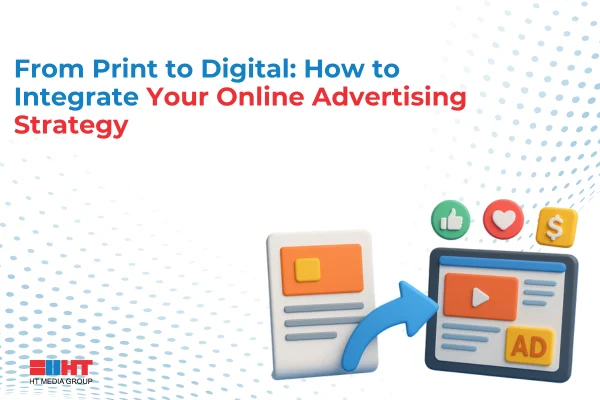Struggling to carve your niche in the crowded marketplace? Consider your brand positioning your company’s compass, guiding customers towards what makes you unique. In this blog, we’ll delve into the art of crafting a brand positioning statement that shines a light on your brand’s true north.
What is Brand Positioning?
 Brand positioning is crucial for establishing a strong identity in consumers’ minds. It involves highlighting unique attributes that differentiate the brand from competitors, ensuring that these distinctions are clear and memorable. A well-crafted brand positioning statement serves as a blueprint for all marketing initiatives, ensuring consistency and alignment with the brand’s core values and message. This consistency helps in resonating with the target audience, fostering a strong connection and loyalty. Effective brand positioning not only clarifies what the brand stands for but also communicates its value proposition, making it easier for customers to understand and choose the brand over others. By consistently reinforcing the brand’s unique attributes, companies can build a lasting impression and secure a competitive edge in the market.
Brand positioning is crucial for establishing a strong identity in consumers’ minds. It involves highlighting unique attributes that differentiate the brand from competitors, ensuring that these distinctions are clear and memorable. A well-crafted brand positioning statement serves as a blueprint for all marketing initiatives, ensuring consistency and alignment with the brand’s core values and message. This consistency helps in resonating with the target audience, fostering a strong connection and loyalty. Effective brand positioning not only clarifies what the brand stands for but also communicates its value proposition, making it easier for customers to understand and choose the brand over others. By consistently reinforcing the brand’s unique attributes, companies can build a lasting impression and secure a competitive edge in the market.
What is a Brand Positioning Statement?
A brand positioning statement defines how a brand distinguishes itself in the marketplace and in the minds of its target audience. It is a concise summary that communicates a brand’s unique value and its desired perception among consumers. The statement typically includes three core elements: the target audience, the brand’s unique selling proposition (USP), and the key benefits that set it apart from competitors. For example, it might articulate why a product or service is the preferred choice and what makes it special. Crafting an effective brand positioning statement involves understanding customer needs, market trends, and the competitive landscape. This statement is essential for guiding all marketing strategies and ensuring consistency in messaging, thereby strengthening the brand’s identity and market presence.
Understanding the Elements of Brand Positioning to Craft Brand Positioning Statement
When crafting a brand positioning statement, it’s crucial to incorporate key elements that encapsulate the brand’s essence and value proposition. Begin by understanding the brand’s unique attributes and the specific needs of the target audience. Clearly define what differentiates the brand from competitors and how it addresses customer pain points. Ensure the statement highlights the brand’s benefits and emotional appeal, creating a compelling narrative. A well-articulated positioning statement should resonate with the audience, reflecting the brand’s promise and establishing a unique place in the market. This approach not only strengthens brand identity but also fosters customer loyalty and trust.
Know More About Branding
- 5 Ways Hyperlocal Brands Can Add Newspaper Ads to their Local Marketing Strategies
- The Future of Brand Management: Trends to Watch
- The Psychology Behind Effective Advertising
- 4 Essential Insights to Supercharge Your Brand Marketing Strategy
Elements of Brand Positioning
A. Brand Values & Personality
At the core of brand positioning lies its values and personality. These define the brand’s character, shaping how it is perceived by consumers. By aligning values with those of the target audience and infusing personality traits that resonate with them, brands can establish a deeper emotional connection, fostering brand loyalty and affinity.
B. Brand Perception
Understanding how the brand is perceived by consumers is critical in crafting an effective positioning statement. By conducting market research and gathering insights into consumer perceptions, brands can identify gaps and opportunities to refine their positioning strategy and better align with consumer expectations.
C. Target Audience Identification
A thorough understanding of the target audience is imperative for successful brand positioning. By segmenting the market and identifying the specific needs, preferences, and behaviours of different consumer groups, brands can tailor their positioning message to resonate with each segment effectively.
D. Brand Promise
The brand promise encapsulates the commitment and value proposition that the brand offers to its customers. It communicates the benefits and outcomes consumers can expect from choosing the brand, setting clear expectations and building trust.
E. Unique Value Proposition
A compelling unique value proposition distinguishes the brand from its competitors by highlighting the unique benefits and advantages it offers to consumers. It articulates why the brand is the best choice for fulfilling specific customer needs or solving particular pain points.
F. Competitive Advantage
Identifying and leveraging competitive advantages is essential for effective brand positioning. Whether it’s product innovation, superior quality, or exceptional customer service, brands must pinpoint what sets them apart and communicate it convincingly to their target audience.
G. Brand Identity
Brand identity encompasses visual elements such as logos, colours, and design, as well as verbal elements such as brand messaging and tone of voice. Consistent branding across all touchpoints reinforces the brand’s positioning and fosters brand recognition and recall.
Why Brand Positioning is Essential to Craft Successful Marketing Strategies?
A. Establishing Differentiation amidst Competition
Effective brand positioning helps businesses carve out a unique identity that distinguishes them from competitors. By highlighting what sets them apart, companies can attract the attention of consumers seeking specific benefits or values.
B. Building Trust and Credibility with Consumers
Trust is the cornerstone of any successful brand-consumer relationship. A well-crafted positioning statement communicates authenticity and reliability, fostering trust among consumers. When customers believe in a brand’s promises and values, they’re more likely to remain loyal and advocate for the brand.
C. Targeting the Right Audience Effectively
Understanding the target audience is essential for crafting resonant messaging. Brand positioning guides marketing efforts toward the audience most likely to engage with the brand’s offerings. By aligning messaging with audience needs and preferences, businesses can maximise the impact of their marketing campaigns.
D. Enhancing Brand Loyalty and Advocacy
Loyal customers are invaluable assets for any brand. Effective positioning creates strong emotional connections with consumers, fostering loyalty and advocacy. When customers feel a deep affinity for a brand, they’re not only more likely to return but also recommend the brand to others.
E. Supporting Pricing Strategies for Profitability
Perceived value plays a significant role in pricing strategies. A well-defined brand positioning statement communicates the unique benefits or advantages offered by a product or service, justifying its price point to consumers. This alignment between perceived value and price enhances profitability and competitiveness in the market.
F. Facilitating Expansion and Diversification Opportunities
As businesses grow and evolve, they may seek to expand into new markets or diversify their product offerings. A clear brand positioning statement serves as a guiding beacon, ensuring consistency and coherence across diverse initiatives. It enables businesses to effectively communicate their value proposition to new audiences and explore new avenues for growth.
Examples of brand positioning
The most effective brand positioning strategy is differentiation, where a brand highlights its unique features or benefits like HubSpot, a leading inbound marketing and sales platform, has differentiated itself by offering comprehensive solutions tailored to the needs of small and medium-sized businesses. By focusing on inbound marketing methodologies and providing intuitive software tools, HubSpot has positioned itself as a thought leader and trusted advisor in the digital marketing landscape, fostering business growth and market dominance.
Challenges and Pitfalls to Avoid
 A. Common Mistakes in Brand Positioning
A. Common Mistakes in Brand Positioning
Crafting a brand positioning statement demands precision and clarity. One common mistake is ambiguity, where brands fail to clearly define their unique value proposition. Inconsistency across messaging platforms can not only dilute brand identity but also leave consumers confused. Ignoring market research and failing to understand target audience needs are also prevalent pitfalls.
B. Overcoming Challenges in Maintaining Relevance and Consistency
Sustaining relevance in a dynamic market landscape poses a significant challenge. Brands must continuously adapt to changing consumer preferences and market trends. Consistency across all touchpoints, including advertising, social media, and customer service, is crucial. Implementing a robust brand management strategy and regularly reassessing market positioning can help mitigate these challenges.
C. Addressing Negative Brand Perceptions and Crises Effectively
Negative brand perceptions and crises can severely impact brand reputation and market position. Brands must respond promptly and transparently to address issues head-on. Building trust through authentic communication and taking responsibility for mistakes can help mitigate damage. Leveraging social media and PR strategies effectively can also aid in reputation management during crises.
FAQs for Crafting Effective Brand Positioning Statements Guide
1. What is brand positioning, and why is it important?
Brand positioning is the process of creating a distinct identity for a brand in the minds of consumers. It’s crucial because it helps differentiate a brand from competitors, build trust with consumers, target the right audience effectively, enhance brand loyalty, support pricing strategies, and facilitate business growth.
2. What are the key elements of brand positioning?
The key elements include brand values and personality, brand perception, target audience identification, brand promise, unique value proposition, competitive advantage, and brand identity. These elements form the foundation for crafting a clear and compelling positioning statement.
3. How does brand positioning contribute to successful marketing strategies?
Brand positioning is essential for establishing differentiation amidst competition, building trust and credibility with consumers, targeting the right audience effectively, enhancing brand loyalty and advocacy, supporting pricing strategies for profitability, and facilitating expansion and diversification opportunities.
4. Can you provide examples of effective brand positioning strategies?
One example is HubSpot, which has differentiated itself by offering comprehensive solutions tailored to the needs of small and medium-sized businesses. By focusing on inbound marketing methodologies and providing intuitive software tools, HubSpot has positioned itself as a thought leader and trusted advisor in the digital marketing landscape.
5. What are some common challenges and pitfalls in brand positioning?
Common challenges include ambiguity in defining unique value proposition, inconsistency across messaging platforms, and ignoring market research and target audience needs. These pitfalls can dilute brand identity and hinder effective positioning.
Ready to take your brand to the next level? Connect with us today to explore how HT Media can amplify your presence across our diverse portfolio of 25+ brands and properties. Let's turn your brand vision into reality!

















Comment